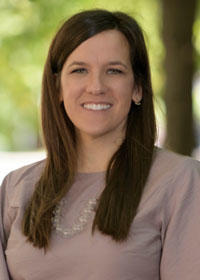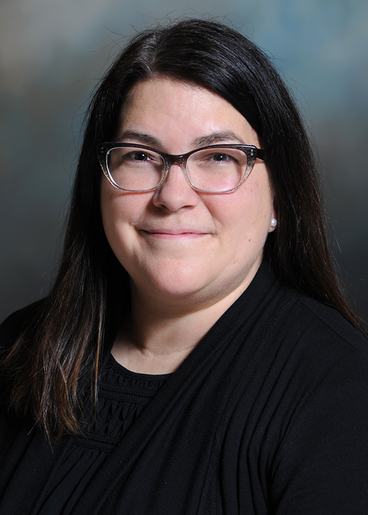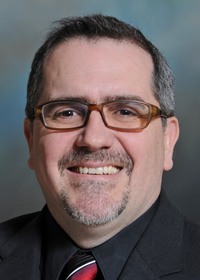Session Organizers: Andrew Hansen, Minneapolis VA Health Care System and Holly Golecki, University of Illinois Urbana-Champaign
Leveraging Soft Robotics Design Principles to Build User-Specific, Dynamic Seat Cushions
Pressure sores impact a wide range of individuals including wheelchair users. Solutions to address pressure sore prevention are limited. This work is aimed at developing devices to prevent pressure sores in wheelchair users with limited mobility or sensation. Informed by stakeholder input, we present a dynamic cushion design to sense areas of high pressure and actuate to relieve that pressure. We use sensor arrays to map pressure across the seat area. To relieve pressure, we propose a grid of custom pneumatic bladders to inflate in response to sensor thresholds. Bladders can be fabricated in a variety of geometries using custom manufacturing techniques. After experimenting with a variety of possible bladder geometries, we selected torus-shaped actuators to optimize durability, stability, and increase breathability in the final design. Given the ability to fabricate custom bladders and program controls, the proposed device can be tailored to users’ specific needs. While static cushion solutions exist on the market, our custom design allows users to dynamically alleviate pressure eliminated the need to constantly readjust position and ultimately reduce time spent treating sores.

Holly Golecki
Assistant Teaching Professor, Bioengineering, University of Illinois Urbana-Champaign
Holly Golecki, Ph.D is a Teaching Assistant Professor in Bioengineering at the University of Illinois Urbana Champaign and in the Biological and Translational Sciences Department at the Carle Illinois College of Medicine. She is a Core Faculty member at the Institute for Inclusion, Diversity, Equity, and Access in the Grainger College of Engineering. Dr. Golecki holds an Associate appointment in the School of Engineering and Applied Sciences at Harvard University. Dr. Golecki earned her BS and MS degrees in Materials Science and Engineering from Drexel University. She then earned her PhD in Bioengineering from Harvard University, developing biomaterials for engineered scaffolds in vivo. Dr. Golecki now uses her expertise in biomaterials applied to robotics. She runs an externally funded research group working in the areas of soft biorobots and engineering education research addressing the challenges faced when humans interact with robots by building accessible tools. Her research spans work engineering biomaterials in medical device design to developing new educational and analysis tools with the goal of increasing equity and access in research and engineering.
Human Centered Design to Guide Mobile App Development for Phantom Limb Pain
As the population of people living with amputation grows, the need for innovative treatment for amputation-related pain is imperative. Graded Motor Imagery is one clinical, neuroscience-informed intervention that has shown success in treating amputation pain. We used human centered design to guide the development and testing of a mobile app to support at-home use of Graded Motor Imagery.

Tonya Rich, PhD, OTR/L
Minneapolis VA Health Care System
Tonya is an occupational therapist and principal investigator in the Rehabilitation & Engineering Center for Optimizing Veteran Engagement & Reintegration (RECOVER) team at the Minneapolis VA Health Care System, focusing on developing novel rehabilitation interventions for pain that serve the needs of Veterans and the broader community.
PURE – A hands free ballbot wheelchair
PURE (Personalized Unique Rolling Experience) is a disruptive approach designed for manual wheelchair users who want hands-free mobility. Based on a ball-based robot, the rider sits above a single spherical wheel (ball). Movement and speed are managed hands-free by leaning in the desired direction. PURE has “omnidirectional” movement and can steer, slide, or spin about a fixed axis. The sleek and minimal-weight ballbot architecture result in a footprint the size of a seated person and the height of a chair. An advanced vision and perception system provides for either full or partial autonomous navigation for obstacle avoidance and driver assistance. PURE is funded by the NSF National Robotics Initiative.

Liz Hsiao-Wecksler
University of Illinois Urbana-Champaign
Liz Hsiao-Wecksler, PhD, directs the Human Dynamics and Controls Laboratory (HDCL). The HDCL uses methods from human-centered design, control theory, mechatronics, hard and soft robotics, musculoskeletal biomechanics, and movement analysis to improve function and the quality of life of persons with disabilities. In addition to working on PURE, the HDCL has been recently exploring the development of medical education task trainers for haptic learning during neurological exams and the use of machine learning for anxiety detection based on wearable devices.
Session Organizer Bio

Andrew Hansen
Director, RECOVER, Minneapolis VA Health Care System
Andrew Hansen is the Director of the Rehabilitation & Engineering Center for Optimizing Veteran Engagement & Reintegration (RECOVER) at the Minneapolis VA Health Care System, and Professor of Rehabilitation Science & Biomedical Engineering at the University of Minnesota. His interdisciplinary center focuses on development and evaluation of rehabilitation technologies and interventions aimed at improving participation of Veterans with amputations and Veterans with spinal cord injuries and disorders.